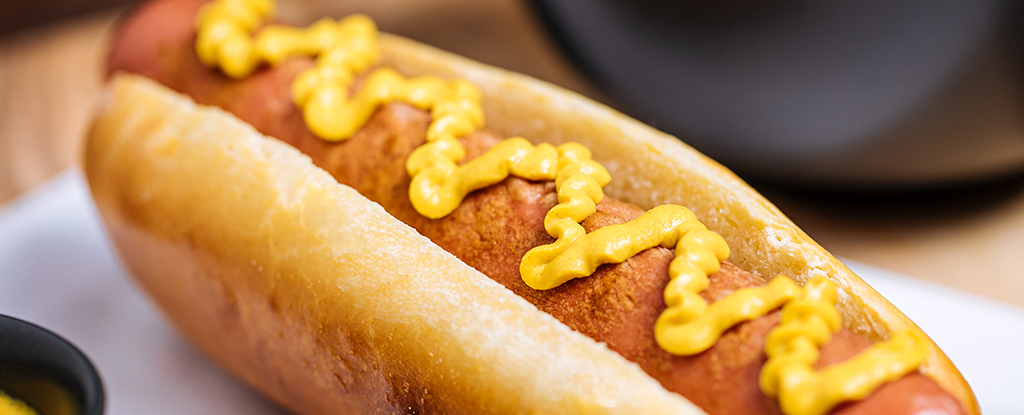Meet the Crispy, Crunchy, Juicy Pork Sandwich That's as Big as Your Head
Defined by a slice of pork that’s pounded out until it’s as big as a dinner plate and fried until crispy, this oversized Midwestern breaded pork tenderloin sandwich is crunchy, tender, and incredibly satisfying.


For centuries, the world’s culinary traditions have met and evolved in the Midwest. As a magnet for immigrant populations and their hopes and dreams, with more cultural flexibility than the long-settled East Coast and South but a stronger sense of community than the wide-open West, the region is a true melting pot—“the most American part of America,” to borrow a phrase from the Midwest historian James Shortridge.
The Midwest is a place where cooks dare to ask questions like, “What if we served our Greek meat stew over spaghetti and piled cheddar cheese on top?” or “Could we turn Ozark chicken and gravy into a Chinese dish?” or “Who’s to say that Special K wouldn’t make a delicious dessert?”
And that instinct for experimentation can really pay off, like when someone in this heavily Germanic and pork-loving region asked, “What if we put schnitzel on a bun?”
According to heartland legend, that someone was Nick Freienstein of Nick’s Kitchen in Huntington, Indiana, opened in 1908, which claims to be the birthplace of the Midwestern breaded pork tenderloin sandwich. Is it really? I’ll leave that to the academics. Whoever came up with it, it was a good idea, which is why it’s now a staple in Iowa and Indiana, the two states that have the strongest claims to the tradition, and on menus just about everywhere else in the region.
Crisp, tender, and consistently satisfying, the Midwestern breaded pork tenderloin sandwich is a Midwestern cousin to the Southern fried chicken sandwich that’s now a top seller at fast food chains like Chick-fil-A and Popeyes.
It’s also a great visual gag—one that represents heartland bounty and a good value. Not all pork tenderloin sandwiches are huge, but the plate-size versions are iconic.
“The bigness is the wow factor,” says Julia Spalding, an editor at Indianapolis Monthly who’s been eating and writing about tenderloin sandwiches for decades. “There’s some fun in figuring out how you’re going to eat it—fold it over, make a triple decker, eat around the edges, or cut it in half and take half home… The bun is almost like a punchline. It’s kind of funny, just sitting there on top of a giant sandwich.”
The Key Elements for Frying the Pork Tenderloin
The breaded pork tenderloin is a straightforward sandwich. To make it, you pound a piece of pork until it’s only about a quarter- or half-inch thick, brine it (which you should), bread it, fry it, and put it on a bun. There are endless opportunities for experimentation within those simple guidelines.
To start the recipe development process, I created a sort of breaded pork tenderloin matrix, listing out the various possibilities, from choosing the cut of pork to pounding to breading to frying to assembly. Overall, I wanted a sandwich that was juicy, salty, and intensely savory, with a clear contrast between the crisp, crunchy crust and the ridiculously tender meat inside. I’ll walk you through a few of the most important considerations.
The Best Cut of Pork for This Sandwich
A breaded pork tenderloin sandwich should start with tenderloin, right? Not necessarily. Many of the Midwest’s most iconic restaurant versions, including the purported original at Nick’s and nearly all those plate-size versions, are made from tender loin, not tenderloin.
It’s logical for restaurants serving up hundreds of sandwiches a day to select loin over tenderloin. Pork loin is larger, more affordable, a little bit fattier, and less likely to fall apart when thwacked with a meat mallet. After it’s been thoroughly tenderized, it really isn’t all that different from tenderloin, anyway. It’s more practical in a restaurant setting.
That said, through several rounds of side-by-sides, a slight difference was evident, and it mattered. For cooking the sandwich at home, the “ridiculously tender” option was tenderloin, without a doubt. While close in texture, pork loin still retains a slight chew even when tenderized. That could be a positive for those who like a more assertive fillet, but it isn’t what I’m going for here. The only texture I want inside the crisp layer of fried breading is tender.
As home cooks, we have more flexibility in our ingredients than restaurants extracting thin margins from hundreds or thousands of sandwiches a week. I don’t fry pork sandwiches at home often, but when I do, I’ll spring for the tenderloin.
Why a Brine Is Critical for the Best Tenderloin Sandwich
In my first round of tests, it was immediately obvious that skipping the brine wasn’t an option. When you’ve pounded a pork loin into submission, it cooks quickly—within just a minute or two. Even a tenderized tenderloin can dry out and get tough before you can pull it out of the sizzling oil. A brine adds flavor and helps the pork stay juicy and tender. I tested a line-up of brining options:
- Buttermilk
- Pickle juice
- Salt-and-sugar
- A combination or buttermilk and pickle juice
- A combination of buttermilk, salt, and sugar
I thought buttermilk might be the answer, but it added a distinctive tang that distracts from the meat-and-potatoes appeal of this simple sandwich, even when diluted. Same for the pickle juice brine. These skinny, pounded-out cutlets absorb flavor rapidly and thoroughly, and I wanted them to taste like pork, not buttermilk or pickles. A salt-and-sugar brine accomplishes that, boosting rather than overwhelming the meaty flavor of the main ingredient.
You might be wondering why I’m using a wet brine here, when Serious Eats has written that dry brining is the best way to brine meat. As that piece acknowledges, there are exceptions.
When you’re dealing with a centerpiece-worthy piece of meat, like a turkey or a beef tenderloin, dry brining saves space. It means you don’t have to contaminate a perfectly good cooler with gallons of raw meat tea. The opposite is true when working with these wafer-thin cuts. You could dedicate a shelf in your fridge to four pounded pieces of pork tenderloin laid out on a wire rack, or you could stuff them into a zipperlock bag and wedge them into a corner.
Many of the benefits of dry brining don’t apply here. We’re browning and crisping the breading, not the meat, so the surface of the tenderloin itself doesn’t need to be dry. Drying out the surface of the meat can be a negative, actually, when you’re pounding it so thinly that it’s almost all surface. The residual brine left on the fillets, even after patting them dry, helps the breading adhere. Flour won’t stick to a piece of tenderloin with the outer texture of beef jerky.
Dialing in the Breading for Maximum Crispiness
In researching popular versions of fried tenderloins, including on the remarkably active Pursuing Pork Tenderloins Facebook page, I came across five main breading options that piqued my interest for testing: saltines, various other crackers (Ritz, Cheez-It, Club, Town House), cereals (corn flakes, Rice Krispies), potato chips, and panko. I went to the supermarket and loaded a cart with boxes of crispy snacks and cereals. Saltine crumbs are the most popular choice, but I wanted to believe that I could find a better alternative—something that added bonus crunch and flavor to the sandwich.
After several rounds of tests, I ended up back at saltines. Once again, I wanted to showcase the flavor of the pork, and saltines gave me the best crunchy but relatively neutral breading, which I could flavor with my own blend of spices. 
If neutral is the goal, why not just dredge in flour? Here’s why: Cracker crumbs are coarser than flour, and their irregular surface traps tiny pockets of air during frying. As the moisture inside the crumbs evaporates, steam pushes outward, expanding those pockets and creating a shattering crunch. Also, because crackers are already baked, they’re lower in free starch content than flour, so they absorb less oil. That means a lighter, less greasy crust. And finally, they’re part of the breaded pork tenderloin tradition! That counts for something.
The Seasoning and Frying Oil
In keeping with my goal of making a sandwich that was simple but intensely craveable, I added what I think of as classic fried chicken sandwich seasoning—black pepper, paprika, a touch of cayenne, and (optional) MSG, for extra mouthwatering appeal. There’s no one way to season a breaded pork tenderloin sandwich, but I think the right approach is to go just a little further than just salt and pepper, adding flavor to a relatively bland cut of meat without distracting from it. (I had a fantastic chorizo-spiced tenderloin not long ago, with a chunky tomato salsa on top. I support having more fun with your spice mix, but this is meant to be a foundational recipe.)
I set up a standard dredging station, seasoned each layer of the dredge for total flavor saturation, and fried in peanut oil at a high temperature, so the crust would brown before the pork inside overcooked. I chose peanut oil for its smoke point of 450°F. If you can’t use peanut oil because of an allergy, look for another oil with an equally high smoke point, such as soybean or sunflower.
Building the Sandwich

Once your tenderloin is cooked, assembling it is easy, but if you want to stay true to tradition, you do have to take a side where toppings are concerned. “It’s either lettuce, tomato, and mayo or mustard, pickle, and onion,” Spalding told me. “Those are two different camps.” The cultural divide is real. I’m usually a mustard, pickle, and onion person, but I don’t judge.
Cut pork loin crosswise into 4 evenly sized fillets, about 6 ounces per piece for a 1 1/2-pound tenderloin. (It’s OK if the sizes are slightly different. The differences will be negligible once the meat is pounded.)
Working with 1 fillet at a time, hold it flat on a cutting board with the palm of your non-dominant hand. Using a sharp chef's, boning, or fillet knife, slice the pork horizontally about 2/3 through cut side, taking care not to cut all the way through; try to do this in as few strokes as possible so the meat is smooth and not sawed. Open butterflied fillet like a book and place flat between 2 sheets of parchment paper or plastic wrap on cutting board. Using a meat mallet, rolling pin, or another blunt heavy tool, pound to even thickness of about 1/4 inch. Repeat with all fillets and transfer to a gallon-size zipper-lock bag.
In a medium bowl, whisk salt, sugar, and 1 cup room temperature water until salt and sugar are completely dissolved. Pour brine over fillets in bag. Seal the bag, pressing out as much air as possible and ensuring that fillets are submerged, and refrigerate for at least 1 hour or up to 4 hours.
Once pork is brined, in a food processor, pulse saltine crackers until crumbs resemble a coarse flour. (You should end up with about 2 cups of crumbs.) Transfer cracker crumbs to a shallow dish such as a pie plate. Spread all-purpose flour in second shallow dish. In a third shallow dish, use a fork to beat milk with eggs.
In a small bowl, combine pepper, paprika, cayenne, and MSG, if using. Divide spice blend into 3 roughly equal parts and add to the cracker crumbs, flour, and egg wash, and whisk to combine.
Set a wire rack in a rimmed baking sheet and set aside. Remove each pork piece from brine and pat dry with paper towels. Working with 1 cutlet at a time, dredge cutlets thoroughly in flour, shaking off excess, then coat with egg wash, allowing excess to drip back into dish to ensure very thin coating, and coat evenly with cracker crumbs, pressing on crumbs to adhere. Place breaded cutlets in single layer on prepared wire rack set over baking sheet; refrigerate cutlets on rack for at least 30 minutes or up to 1 hour to set the crust.
When ready to cook, adjust oven rack to middle position and preheat the oven to 150°F (65℃) (or “keep warm,” if yours doesn’t go that low). Set a clean wire rack in a clean rimmed baking sheet; set aside.
In a 12-inch cast iron skillet, add oil and heat over medium-high until oil registers 425°F (220℃). Carefully lay 2 prepared cutlets, without overlapping, into skillet. Cook, adjusting heat as needed to maintain oil temperature around 375°F (190℃), until cutlets are golden brown and register an internal temperature of at least 145°F (62℃), about 2 minutes. Transfer cutlets to the prepared wire rack and hold warm in the oven while you cook the remaining cutlets.
Once cooked, in a separate large stainless steel or cast iron skillet, melt 1 tablespoon butter over medium-high heat. Once melted, add 2 split buns, cut sides down, and toast until golden and crisp along edges, 3 to 5 minutes. Repeat with remaining buns, adding more butter if needed.
To assemble the sandwich, place one cutlet on bottom bun and top with either mustard, pickles, and sliced onion, in that order, or lettuce, tomato, and mayonnaise. Repeat with remaining sandwiches. Serve.
Special Equipment
Meat mallet, rolling pin, or another blunt heavy tool; gallon-size zipper-lock bag, 12-inch cast iron skillet, Large stainless steel or cast iron skillet
Make Ahead and Storage
The sandwiches are best eaten right away.
What's Your Reaction?



















































































